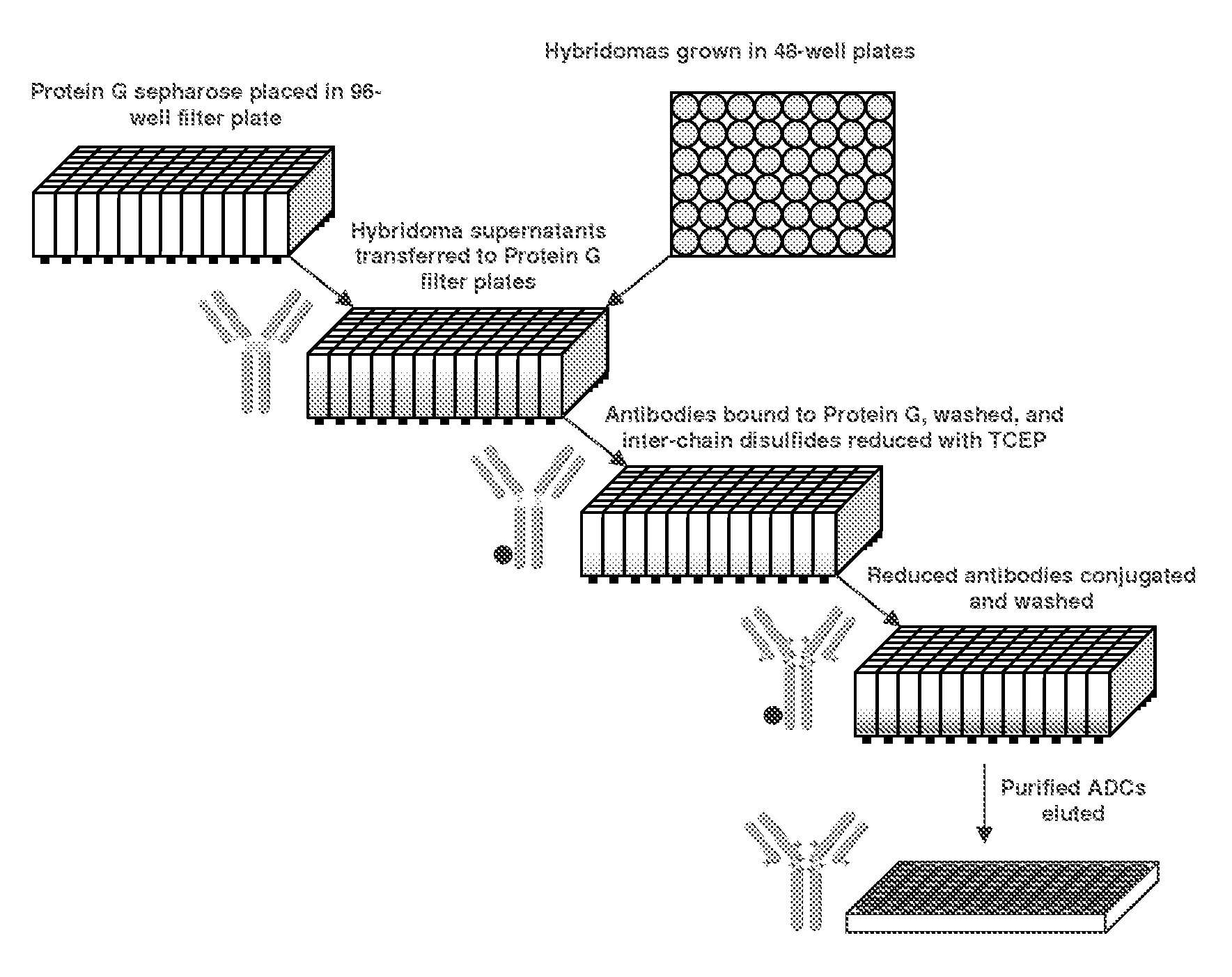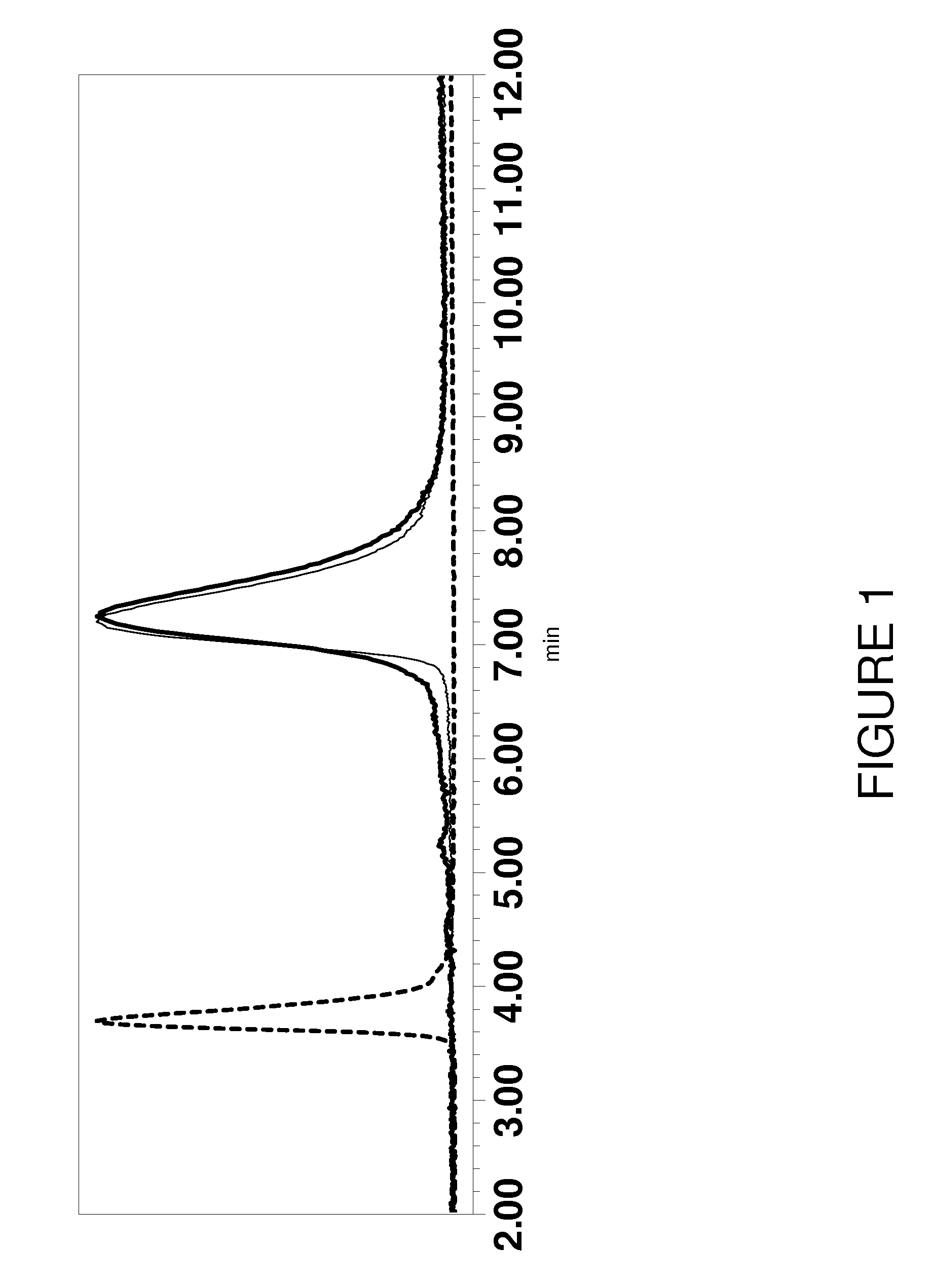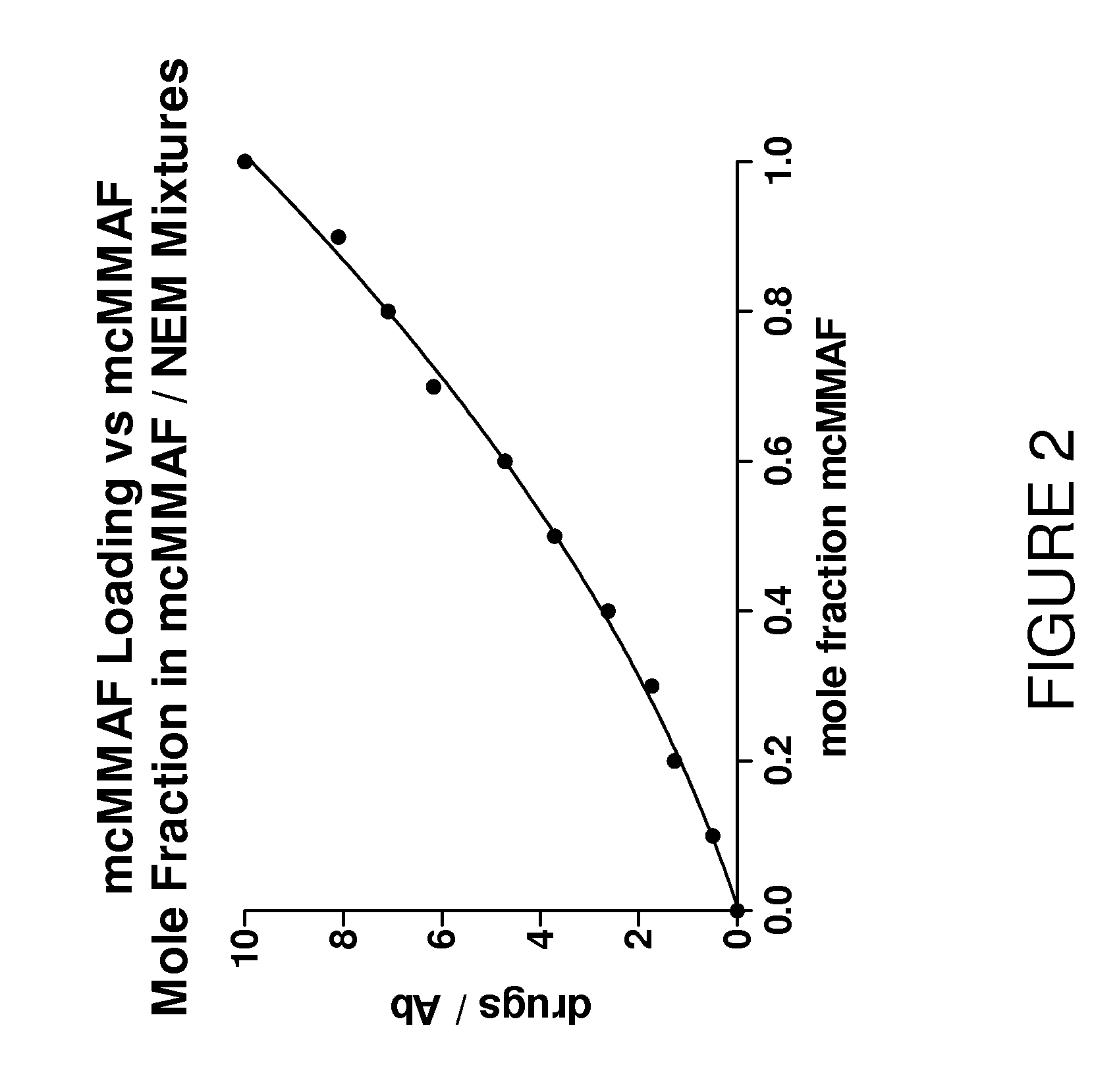Methods for screening antibodies
a screening method and antibody technology, applied in the field of screening methods, can solve the problems of limiting the yield of conventional conjugation methods, and achieve the effects of reducing the desired level of drug loading, and reducing the reducible disulfide bond
- Summary
- Abstract
- Description
- Claims
- Application Information
AI Technical Summary
Problems solved by technology
Method used
Image
Examples
example 1
Reduction of Antibodies in Solution and by Solid Phase
[0094]It is well recognized that under conditions in which antibodies retain their native folded structure, TCEP readily reduces the interchain disulfides without reducing the intrachain disulfides of the immunoglobulin domains, which are inaccessible to water-soluble reagents. When an antibody is bound to protein G affinity media, this selectivity for the interchain disulfides remains unchanged. This is illustrated in FIG. 1. This figure shows chromatograms made by reducing a protein G-immobilized murine antibody with 10 mM TCEP, followed by conjugation with an excess of mc-MMAF. These chromatograms are overlaid with chromatograms of the same antibody reduced with TCEP by conventional solution chemistry and reacted with mc-MMAF. The comparable results between the standard solution method and the solid phase method indicate that the reactivity of the antibody is not significantly changed upon binding to protein G affinity media. ...
example 2
Tailoring the Ratio of Drug to Capping Agent in the Drug Conjugation Reaction Mixture for a Desirable Drug Loading
[0095]FIG. 2 illustrates the degree of loading of the maleimido drug mcMMAF when added as a mixture with N-ethyl maleimide (NEM) to a murine IgG1 immobilized on protein G and fully reduced with excess TCEP. The figure illustrates the slightly lower reactivity of mcMMAF relative to NEM, such that, in this example, if a conjugate with an average mcMMAF mole fraction of 0.4 is desired (a drug loading of 4), the mole fraction of mcMMAF in the maleimide mixture must be 0.53. The loading of mcMMAF on each conjugate was determined by reversed-phase chromatography with a PLRP-S column, which effectively separates the heavy and light chains on the basis of their drug loading; the hydrophobicity of mcMMAF results in later retention times for species with increasing degree of mcMMAF conjugation (FIG. 3). A mixture of mcMMAF and NEM was prepared at this ratio and applied to a small ...
example 3
Method for Determining Exemplary Fluorophore Loading Level and for Preparing a Standard for Determining Fluorophore Loading in Antibody Conjugates
[0096]Mixed conjugates can be prepared with both drug and a fluorophore present on the conjugate in a controllable manner. The presence of a fluorophore can enable more sensitive quantitation of the conjugates resulting from a large panel of antibodies or as a reporter group for binding assays or other assays performed on the panel. Alexa Fluor® 647 maleimide can be included in a mixture of maleimides, along with mcMMAF and NEM, to create a panel of antibody conjugates with a desired average loading for Alexa Fluor® 647 and mcMMAF. To assess a targeted loading level of AlexaFluor 647, a series of murine IgG1 conjugates was prepared using a binary mixture of AlexaFluor 647 maleimide and mcMMAF. The average loading of mcMMAF on these conjugates was determined by PLRP-S chromatography, and the loading of Alexa Fluor® 647 was calculated as (10...
PUM
| Property | Measurement | Unit |
|---|---|---|
| nm wavelength | aaaaa | aaaaa |
| nm wavelength | aaaaa | aaaaa |
| wavelength | aaaaa | aaaaa |
Abstract
Description
Claims
Application Information
 Login to View More
Login to View More - R&D
- Intellectual Property
- Life Sciences
- Materials
- Tech Scout
- Unparalleled Data Quality
- Higher Quality Content
- 60% Fewer Hallucinations
Browse by: Latest US Patents, China's latest patents, Technical Efficacy Thesaurus, Application Domain, Technology Topic, Popular Technical Reports.
© 2025 PatSnap. All rights reserved.Legal|Privacy policy|Modern Slavery Act Transparency Statement|Sitemap|About US| Contact US: help@patsnap.com



